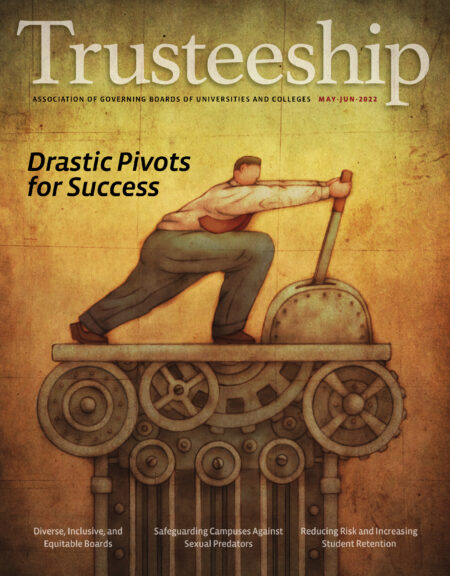
Five years ago, Diné College approved its five-year strategic plan. I know from other experiences and conversations that strategic plans usually sit on a desk with little review, gathering dust until the next one needs to be approved. As a corporate planner and strategist, I knew this had to change but the question was how?
The solution involved focusing on the core management principles for implementing a strategic plan. What is involved is evaluating people, processes, and resources while focusing on the functions of strategy: providing direction by giving a framework to management about tasks and aligning the interests of stakeholders to engage them. The development process for the framework of the strategic plan was a conversation with board members, administrators, and other stakeholders concerning the direction of the organization.
Framework and Alignment of Management
Strategy is about outcomes, not tasks. This involves aligning the big-picture themes such as financial health or student success with the directions desired such as “strengthening financial health and self-reliance by increasing funding sources that support institutional growth, and by optimizing current financial systems” or “promoting student success by increasing cross-institutional dialogues and expanding student opportunities for leadership development.”
These strategic initiatives should be broad enough for the work to trickle down to every level within the organization, so that each department can engage in the strategy within its scope and be a part of the strategic interest of the organization. Secondly, when the strategy trickles down,
the direction of each department should be clear: what each department’s goals are, who’s accountable for what, and what resources are needed in relation to the strategy. For board members, it’s critical to refrain from developing or approving the exact detail of each department’s goals and
resources, but rather to focus on the processes and policies guiding their functions.
This process of allowing management to create its own goals will help to build buy-in and also clarify the priorities of the institution. Finally, all goals need to align with strategic interests, including those of the board, president, committees, and/or departments. This alignment of goals is critical for achieving results because it’s the collective accomplishment of everyone that enables the institution to take big steps.
The Board’s Role in Managing Strategy
Monitoring the numerous goals throughout the institution appears to be a daunting task. As with strategy, it’s important to distinguish between data from the big picture and data that are used day-by-day with administrators. Having a governing body dive too deep into data can be costly
to the institution because this can appear to undermine the leadership of the institution and can be a distraction from the performance of the institution. Rather, the board’s function should be to monitor data through the lens of the administrative processes and institutional policies that provide a perspective on institutional progress. Having a conversation about goals and key performance indicators is key to aligning the
board and administration.
What’s useful in managing and illustrating the data is developing a “heat map” to help provide a quick snapshot of progress. Additional information such as percentage changes or comparison to benchmark expectations can also be provided. Having a heat map with data integrated into a report can help a board maintain focus on priorities and stimulate conversations that are meaningful to the institution.
Greg Bigman is the chair of the Diné College Board of Regents and a member of AGB’s Council of Board Chairs.


